
views
Learning Basic Jazz Moves

Stand on one leg and move the other foot away to perform a brush. In a brush, your foot will lightly skim the floor as you move your leg. Usually, your leg stays straight as you perform this movement.

Draw in your torso to perform a contraction. Imagine that you are bringing your belly button in towards your spine. Make the movement seem more exaggerated by pushing your shoulders and knees forward as you execute the contraction.
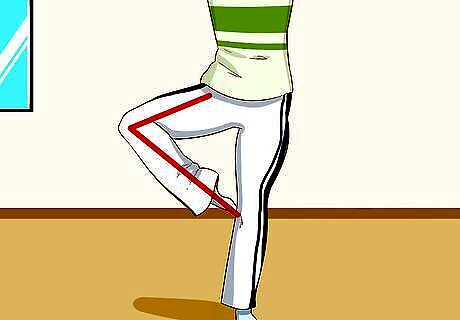
Stand with your heels together and bend your knees to plié. Your legs should be turned out at the hips so that your knees are bent over your toes. As you bend your knees, keep your spine as straight as possible to lengthen your torso.
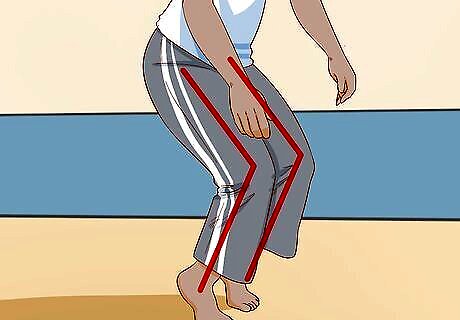
Stand on the balls of your feet with your knees bent for a forced arch. A forced arch involves raising your heels off the floor while bending your knees. This can also be called a demi-plié with the heels up.
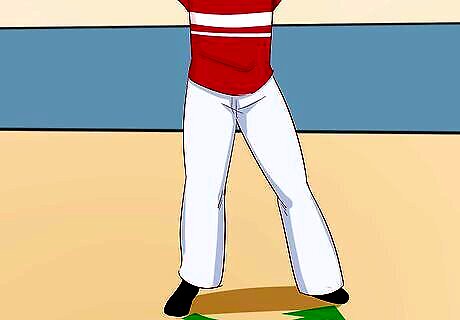
Quickly shift your weight from one foot to the other for a ball change. Start by standing with one foot in front of the other, with your weight slightly shifted towards the front. Shift your weight to your back foot, then quickly return to the front foot. This can be done while you’re standing still or while you are travelling.
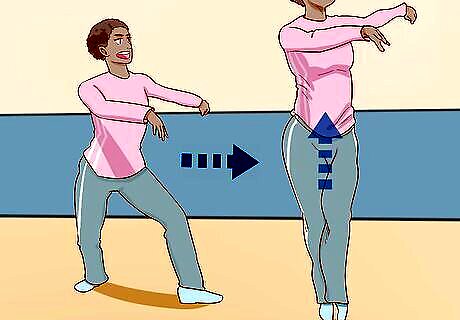
Step out, bring your feet together, and step again to chassé. The step-together-step is a popular move in a number of dance styles, and it’s used commonly in jazz dancing.

Move your leg in a sweeping arc in front of you to fan kick. Fan kicks make a dramatic impact on the audience, so they’re a popular move in high-energy jazz dances.
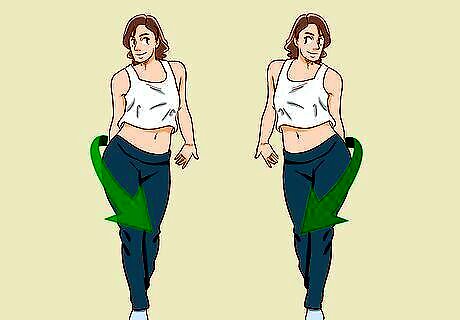
Turn out your feet and alternate your shoulder movements to jazz walk. When you move one foot forward, the opposing shoulder should be brought forward. Then, step again and bring the other shoulder forward at the same time. You can add your own take to these movements for fun variations on a jazz walk, like adding in hip rolls or finger snaps.

Mambo by swiveling your hips as you move front to back and back to front. The mambo is extremely influential on jazz dancing. Incorporate this ethnic style by moving your hips in a figure-8 style as you move in a front-to-back motion and then return to your starting point.
Practicing Jazz Turns

Focus on one spot while you turn so you don't get dizzy. While turning, you should turn your head and look at the same spot where you started. This is known as spotting, and it's a trick that dancers of all disciplines use.
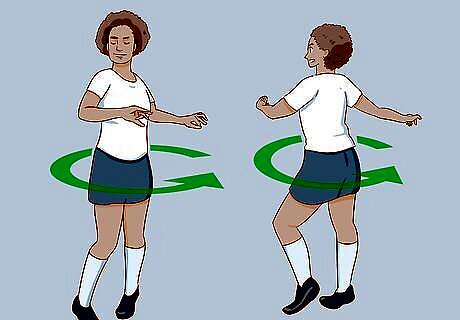
Turn towards your standing leg to perform an inside turn. Your standing leg is the leg that is supporting most of your weight. As such, it can also be called your supporting leg. If your weight is on your right leg and you turn towards your right, that is an inside turn.
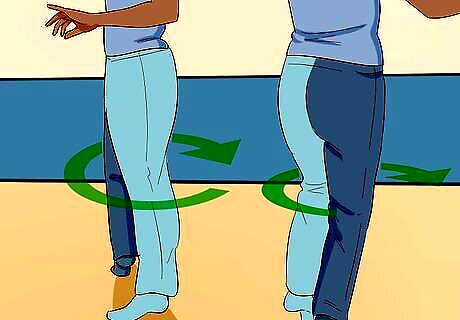
Turn away from your standing leg for an outside turn. This is the exact opposite of an inside turn. If you are standing with your weight on your right leg and you turn to the left, you have performed an outside turn.
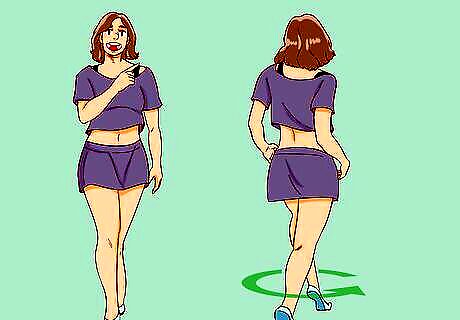
Pivot with one foot touching the other knee to pirouette. Start by standing with one leg in front of the other, with both feet turned outwards. Bend at the knees as if you are curtsying, then push off of your back foot as you lift it towards your standing leg. As you turn, keep your toes pointed. The pirouette is one of the most common dance moves. It is especially popular in ballet, but it is often used in jazz as well.
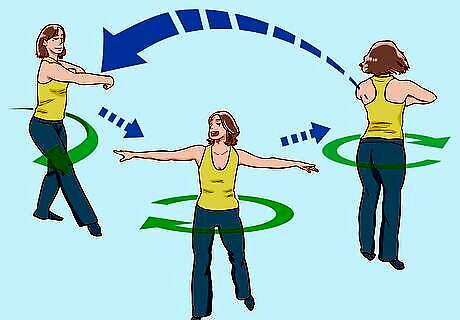
Cross your legs, then unwind and cross them again for a soutenu. In a soutenu, your feet will swivel, but they will stay planted in the same spot. If your left leg is crossed in front of your right, turn 180 degrees towards the right until your right leg is crossed in front of the left.

Perform half-turns while you travel to perform a chaîné turn. Chaîné is French word meaning "chains", and this move is called that because the half-turns link together to form one fluid motion. Practice performing these as smoothly as possible.
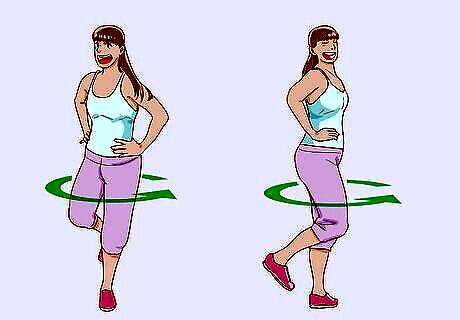
Push yourself with one foot for a paddle turn. In a paddle turn, one foot stays stationary and pivots while you use the other foot to push you in the direction of your turn. A single paddle turn will turn you 360 degrees.

Spin on one foot with your body straight for a pencil turn. The pencil turn is the spin most people think of when they picture dancers spinning. Step backwards with one foot, then shift your weight back to your front foot. Push off your back foot, lifting onto the toes of your standing leg as you rotate. Bring your arms in front of your body as you spin.
Putting it all Together
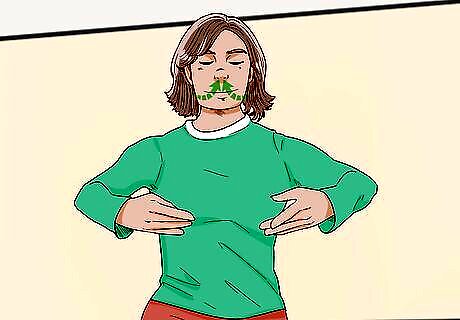
Breathe deeply as you dance. It can be easy to hold your breath or get winded as you're practicing new dance moves, but focus on keeping your breathing steady and slow. This will naturally make your movements seem more graceful than they will if you are out of breath.
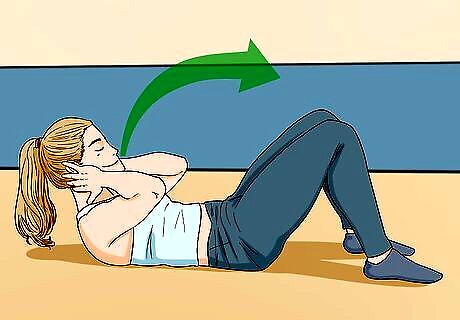
Practice controlling your movements. Graceful dancers make their moves seem effortless, but in reality, it's control that allows them to move so fluidly. You can improve your control by exercising the muscles that stabilize you, like doing sit-ups to strengthen your core. For example, if you perform a fan kick, don't just throw your leg into the air. Instead, control the movement from the moment your foot leaves the floor until it lands again.
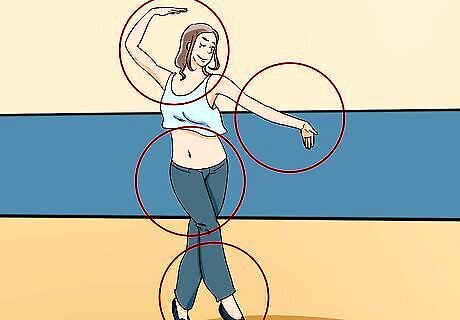
Pay attention to the transitions between steps. The movements between steps are just as important as turns and jumps themselves. Pay attention to how you hold your arms, head, and feet when you are travelling or in the counts leading up to a step.

Listen to the music you'll be dancing to. Even when you're not dancing, you can listen to the music and imagine your moves. Picture yourself moving gracefully to the music, then try to emulate that as you dance.
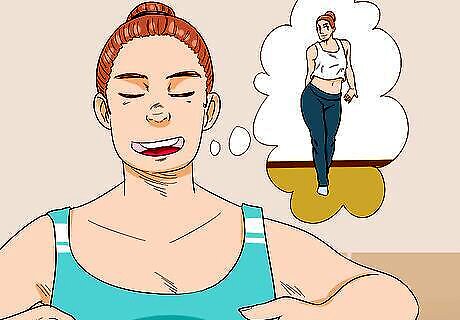
Move with the rhythm of the music. If you're focusing on counts or thinking about what you're doing next, it can be easy to forget about the fluidity of the music you're dancing to. Once you've mastered the basics of your dance, practice it to music.
















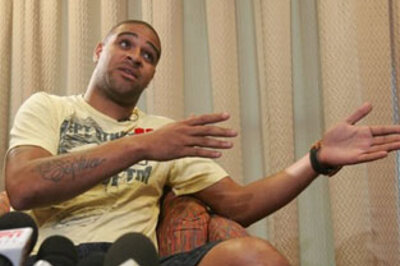
Comments
0 comment